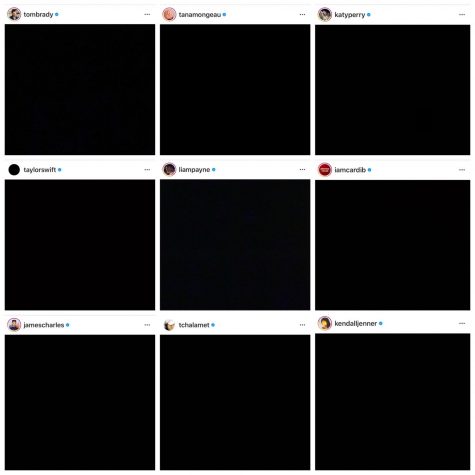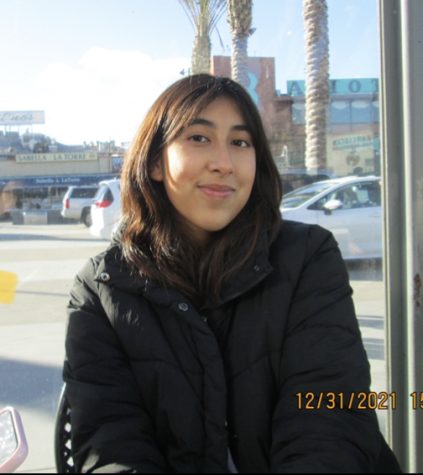Activism Should Be More Than Just a Hashtag
This article was originally published on Global Student Square, the publishing arm of Newsroom by the Bay, a digital media program for high school journalists.
LA CAÑADA FLINTRIDGE, California –– Activism has always been an important part of my life, and I consider myself an advocate for social justice. But up until last month, I was unaware that my activism could be considered performative.
Performative activism, or allyship, is when someone with privilege expresses support for a marginalized group, but the support is not helpful or, in some cases, even harmful. For performative activists, being an ally of a marginalized group gives them a reward by gaining them approval from their fans and followers.
Often, performative activism is fleeting. After the death of George Floyd, and African American man killed by police, on May 25 and the emergence of large-scale protests in support of the Black Lives Matter movement in early June, some influencers posted a black screen captioned with #BlackoutTuesday or #BlackLivesMatter hashtags to show their support for the movement. Then, after a couple of hours, they returned to their strictly curated feeds featuring selfies and avocado toast.

Performative activism can be viewed as negative, but some believe that the positive change it brings about overcomes the selfish motivation behind it.
In a phone interview, Karen North, clinical professor of communications at the University of Southern California, said she strongly believes in the positive effects of performative activism.
“It helps people develop more interest, knowledge and passion about the thing they supported, even if they initially did so just because it was a trending topic,” said North.
Performative activism, says North, spreads awareness to a large group of people. Influencers may use a social movement to gain attention on social media, but they nonetheless make their audience aware of injustices when they share a hashtag or a post.
According to North, celebrities and influencers have a large influence over their fans.
“If the Kardashians say something, then people are just going to believe that they care about that,” she said. “If you’re a follower of the Kardashians, then you’re all of a sudden going to care about that too, or you’re going to post something about it.”
This chain of sharing and posting increases awareness around social justice issues. Performative activism plays a large role in the spread of social consciousness.
However, there is more to being an ally than just saying you support a cause and sharing a post. To some, performative activists do not make tangible contributions to addressing social issues, but instead reap the benefits to their image without doing meaningful work. Some influencers and celebrities even staged photoshoots at #BLM protests to post the photographs on their social media.
https://twitter.com/literallysofie/status/1269321406057050112
Dustin Duong, a freelance photojournalist who has been featured in The Associated Press and The Daily Tar Heel, the student newspaper of the University of North Carolina, thinks that performative activists make no difference to a social justice movement.
“You can call it virtue signaling, trying to signal to other people that you’re invested in the community and you’re a good person, but you’re doing that without actually doing any legwork or anything that is actual progress,” he said.
This false form of allyship does nothing to truly bring about solutions to problems that face marginalized communities and benefits only the performative activist.
Duong said that in the photojournalism world, performative activism is just as problematic.
“I think it’s really detrimental. It’s really exploitative,” he said. “You’re going into a place and you’re taking so much, but what exactly are you giving back?”
There are many ways to be an ally without crossing the boundary of being performative. As an active citizen who wants to contribute to the discourse of this new chapter in the civil rights movement that we are experiencing, you have to ask yourself where you draw the line between genuine and performative activism. This line may be different for each person. To me, being an activist means making sacrifices to actively help a social cause.
https://www.instagram.com/p/CCbhYwCJLAs/?utm_source=ig_web_copy_link
During the coronavirus pandemic, social media has played an important role in the development of the Black Lives Matter movement. Although posting about a movement can be helpful, it is important to remember to take action in real life. Going to protests may be difficult because of COVID-19, but there are many other ways to stay active. Being an ally is more than just voicing support online; a good ally goes beyond social media to make change because activism is more than just a hashtag.

Madison Rojas is a senior at Mayfield Senior School and currently serves as the Editor-in-Chief of The Mayfield Crier. Madison has received multiple awards...

